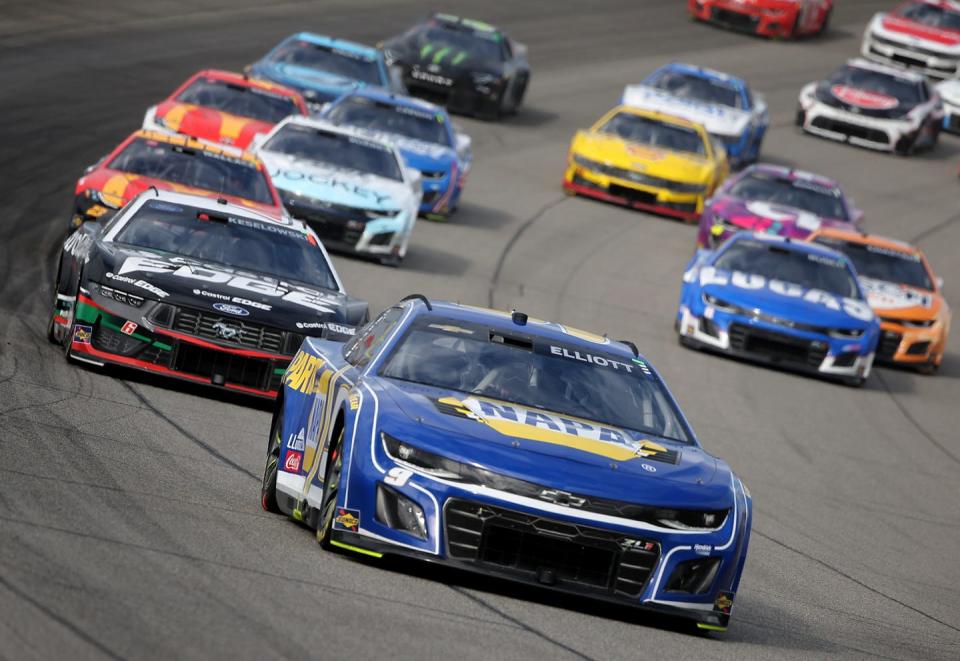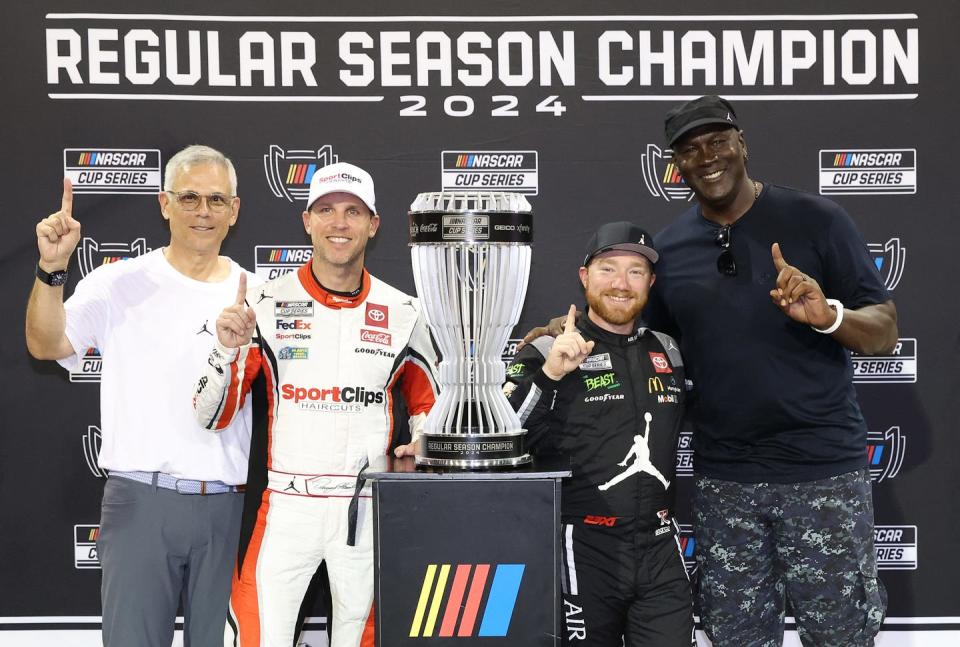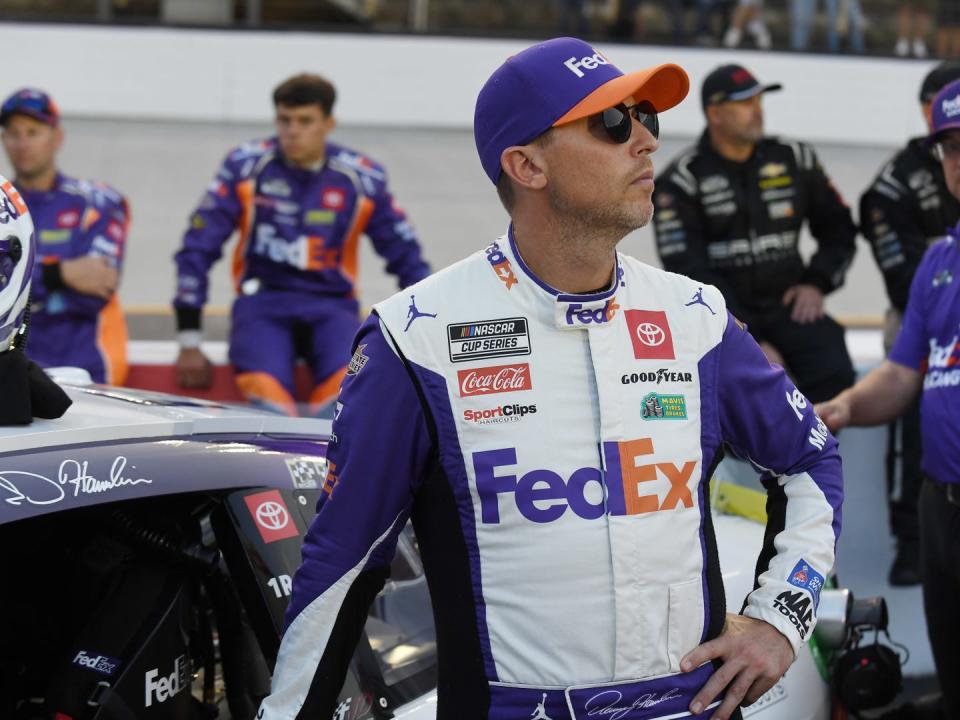Antitrust Lawusuit Against NASCAR Sheds Light on Uneven TV Revenue Sharing

A federal antitrust suit filed on Oct. 2 against NASCAR by 23XI Racing and Front Row Motorsports looks to break up alleged monopolistic practices by NASCAR.
The suit alleges in part that TV revenue is shared between NASCAR and its teams in a manner no where close to inline with other major sports.
Curtis Polk, co-owner of 23Xl Racing, says "teams are only sharing in the neighborhood of 13% of the overall pot that the sport is generating."
"When the 15 NASCAR Cup teams that possess Charters began negotiating a new agreement with the sanctioning body, one of the key issues was the percentage of money distributed to the teams from the television package.
The teams receive 25% of the money while 65% goes to the tracks, and 10% to NASCAR.
In the federal antitrust suit filed against NASCAR by 23XI Racing and Front Row Motorsports, it states that other major professional sports in the United States, such as the NFL and NBA, share all of their national television revenues at the league level equally. It maintains the 2016 Charter agreements shared a “very modest percentage of these revenues with the chartered teams.”
It says the 2016 Charter agreement paid “pooled” money to the chartered teams of approximately 37% of broadcast revenues.

“I didn’t really understand all of the ways in which the sport was governed and what the economics were from day one,” said Curtis Polk, co-owner of 23XI Racing and Michael Jordan’s business manager. “It was something, obviously, that I learned as time went on.
“When you compare it to the other sports, even in this new Charter agreement with what gets Ballyhooed as this increase in revenues for the teams, the teams are getting roughly over $400 million next year in a sport … that generates close to $3 billion a year. So, the teams are only sharing in the neighborhood of 13% of the overall pot that the sport is generating.
“Now, let’s look at the drivers. The drivers, 36 of them, probably average about $3 million a driver—a $100 million (total)—on a sport that generates roughly $3 billion of revenues. That's 3%. Compare that to basketball where the players make 49%. Football where it’s in 40%.
"It’s incredible that the people who go out there and entertain the fans and compete every weekend and risk their lives are only getting 3% of the gross revenues of the sport. As those things came to my knowledge, it was apparent that the system needed to be overhauled.”
Prior to 2001, each track negotiated its own TV deal, but even then, not all of the races were televised.
The networks broadcasting NASCAR Cup races were CBS, TBS, ESPN and The Nashville Network. Martinsville wanted a delayed telecast because Clay Earles, then owner of Martinsville Speedway, believed a live one would hurt his gate receipts. SETN, which no longer exists, broadcast tape-delayed NASCAR races 1984-1988, and handled the Martinsville events.
Media Nearly Boycotted Daytona 500
Under Brian France’s administration, NASCAR convinced the track owners that if the sanctioning body negotiated a TV package for its three national series, it would be more lucrative. However, getting competitors and the print media to sign the annual credential application issued in conjunction with the new TV package encountered a major roadblock when it came to intellectual property rights.
Once it was noted to the competitors that if they signed the application NASCAR owned their intellectual property rights for perpetuity, many of them began marking out certain language on the application and noting the changes with their initials.

For the media, the language said everything gathered during an event, i.e., interviews and photographs, belonged to NASCAR for perpetuity. Newspapers are copyrighted and, in that era, they possessed a great deal of influence. Gannett, owner of USA Today, Knight-Ridder, and other media conglomerates entered into negotiations with NASCAR. Reporters were told not to sign the document and not to travel to Daytona until the issue was resolved.
It probably was the closest the print media has come to boycotting the Daytona 500. The issue was resolved two days before Daytona 500 qualifying. One newspaper reporter made T-shirts commemorating the event and arrived at Daytona to distribute to media members who wanted them.
First TV Package Ballooned NASCAR Revenue
That first TV package negotiated by NASCAR began in 2001 with NBC, TBS and Fox. According to the suit, that package was worth $400 million per year. It contends the next TV package with ABC/ESPN, Fox and TNT that ran 2007-2014 was worth $600 million per year.
The 2015-2024 deal with Fox and NBC increased the annual value again to $820 million annually, according to the suit, or $8.2 billion for the 10-year deal. With the new seven-year TV package—2025-2031—with Fox, NBC, Amazon and Warner Brothers paying a total of $7.7 billion or $1.1 billion per year, that means NASCAR’s broadcast deals have been worth $23.1 billion since 2001, according to the suit.
EDITOR’S NOTE: In a series of articles, Autoweek will take a look at the issues addressed in the antitrust lawsuit filed against NASCAR by 23XI Racing and Front Row Motorsports. Representing the two race teams is Jeffrey Kessler, whose legal victories include the creation of NFL free agency, the implementation of name, image and likeness deals in college athletics and winning equal pay for the U.S. women’s national soccer team.

 Yahoo Autos
Yahoo Autos 